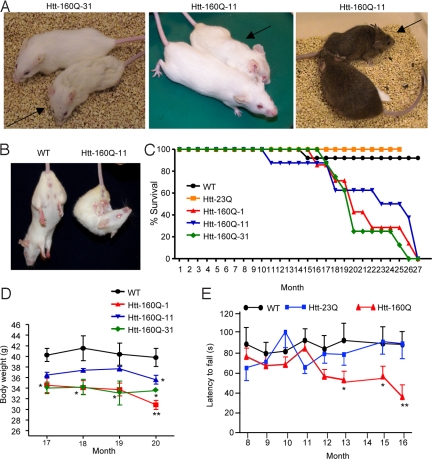Fig. 3.
Progressive neurological phenotypes of GFAP-HD mice. (A) Photos of GFAP-HD mice. Htt-160Q-31 (20 months old) and htt-160Q-11 mice (18 months old) on FVB background and their littermate controls are shown in the left and middle panels. Htt-160Q-11 mouse and its littermate control (11 months old) that also carried the B6C3 genetic background are shown in the right panel. Arrows indicate mutant mice. (B) Old GFAP-HD mouse (18 months old) showing the clasping phenotype. (C) Surviving plots for wild-type (WT), htt-23Q, and three GFAP-HD mouse lines. (D) Body weight loss of male GFAP-HD mice is observed after 16 months. (E) Rotarod performance of wild-type, htt-23Q, and htt-160Q mice. *, P < 0.05; **, P < 0.01 compared with WT or htt-23Q mouse line.

